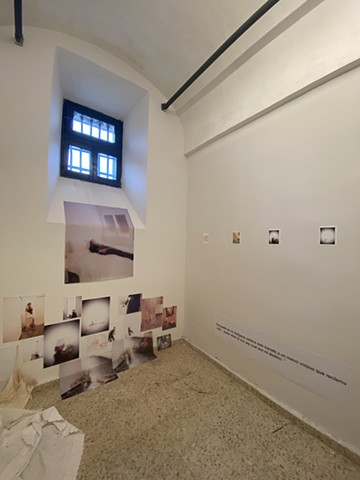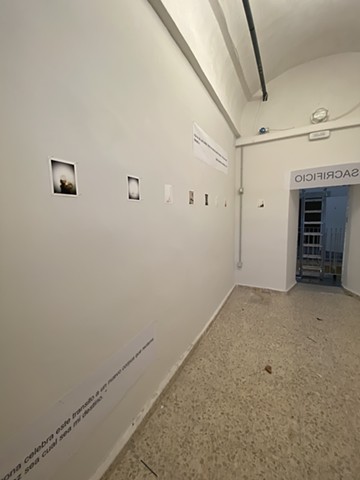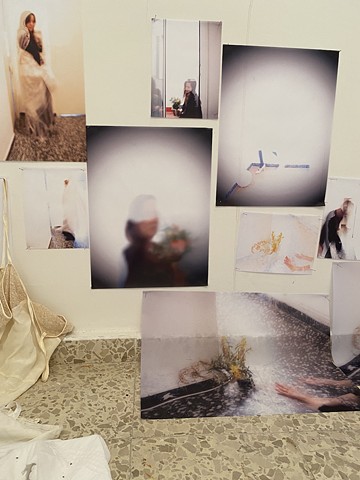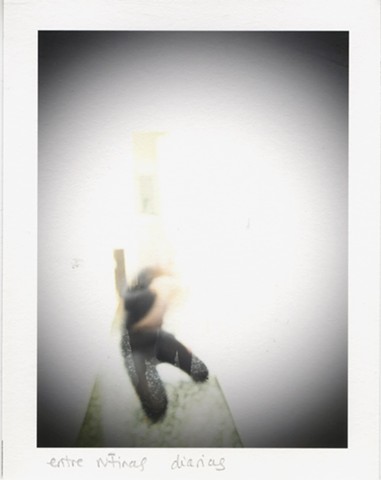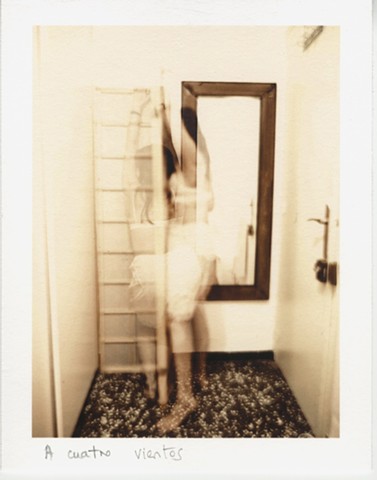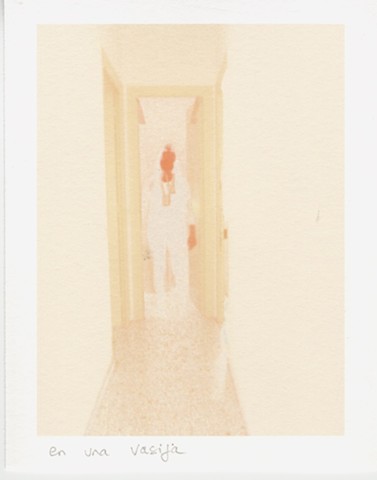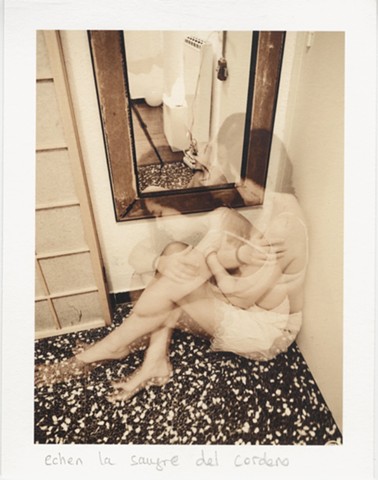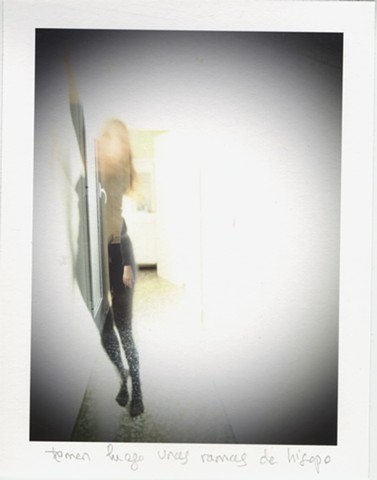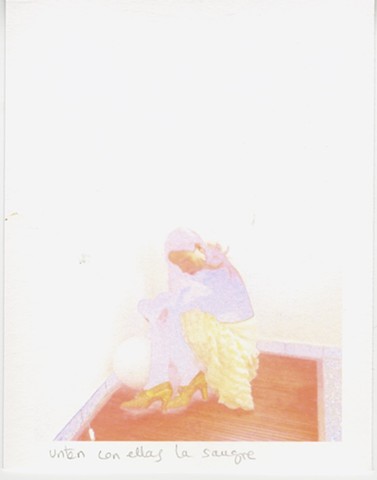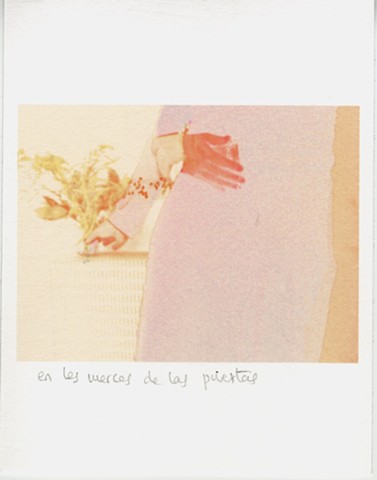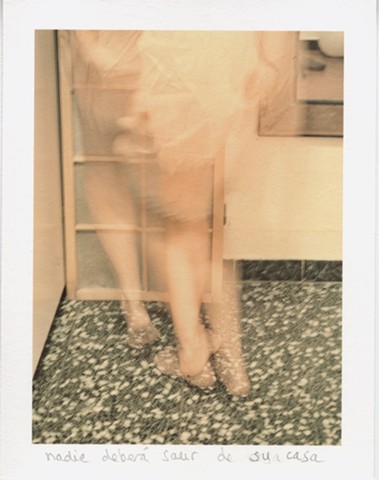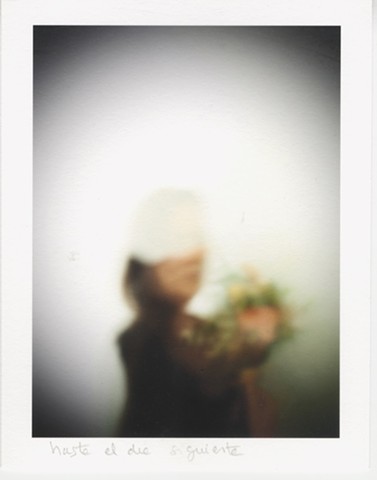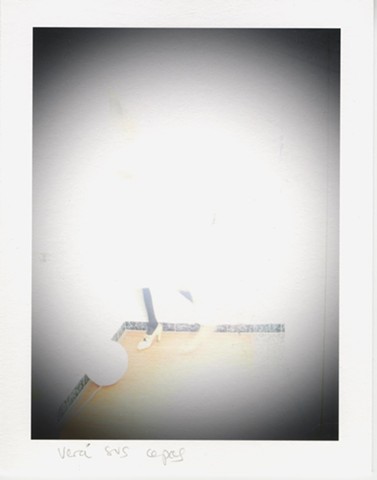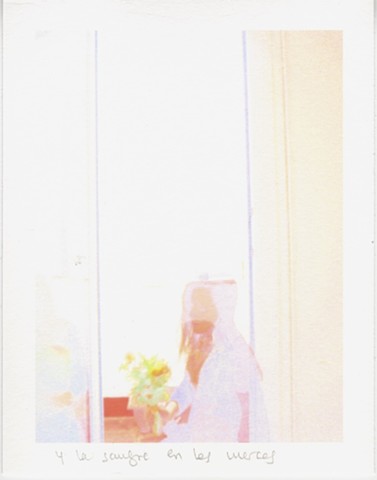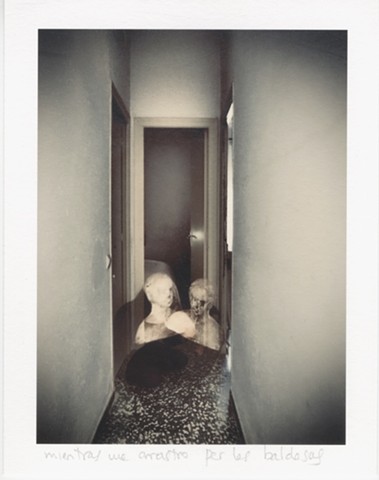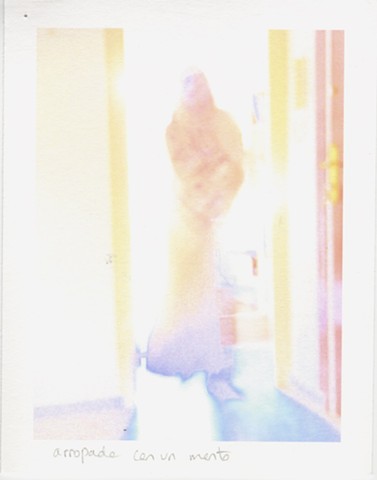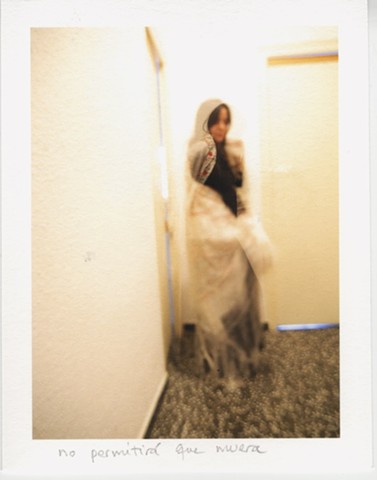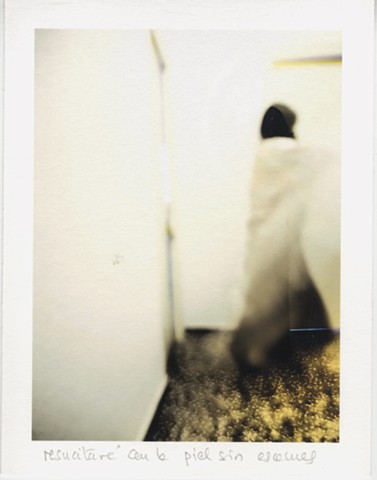ANTIGONA
ANTIGONE (the sacrifice)
«... environment unknown void is created around her; the city does not welcome her; she finds no place either among the living or the dead: her loneliness is revealed.
Maria Zambrano, Trails, p. 212
I make this series of self-portraits during Holy Week in two thousand and twenty. I have been in my house-workshop for two months due to the state of alarm due to the Covid 19 pandemic. My house becomes a space of confinement. A place where time and space are lost.
With a tripod, timer and double exposure I seek to capture how time and space are juxtaposed around my body.
As in the tragedy of Antigone that María Zambrano told us about throughout her work, death appeals to transit. Antigone in the face of the sacrifice of injustice claims life, a voice that unleashes the tongue to travel with words.
In Sophocles' tragedy the rite of death is put into action.
I intervene the self-portraits with a poem inspired by two quotes from Exodus that speak of the pagan rites that were performed on the spring solstice, coinciding with the Jewish Passover. The perfect sacrifice is that of the lamb: the crucified Christ will rise again. I, we will resurrect. This confinement becomes a ritual of passage, it reveals to me that a part of me dies to free itself.
A part of me, Antigone, celebrates this new corpus that demands life, taking charge of the new destiny, of being able to raise my voice, of being able to create, the freedom to be, whatever my destiny.
"He was given a grave. He had to be given time too. And more than death, transit."
Maria Zambrano, Trails, p. 205
ANTIGONA ( el sacrificio )
«… se hace entorno suyo un vacío hasta entonces desconocido; la ciudad no le acoge; no encuentra lugar alguno ni entre los vivos ni entre los muertos: se revela su soledad.»
María Zambrano, Senderos, p. 212
Realizo esta serie de autorretratos durante la Semana Santa del dos mil veinte. Llevo dos meses en mi casa-taller a causa del estado de alarma por la pandemia del Covid 19. Mi casa se convierte en un espacio de encierro. Un lugar donde el tiempo y el espacio se pierden.
Con un trípode, temporizador y doble exposición busco captar como el tiempo y el espacio se yuxtaponen alrededor de mi cuerpo.
Como en la tragedia de Antígona de la que nos hablo María Zambrano a lo largo de toda su obra la muerte apela al transito. Antígona ante el sacrificio de la injusticia reclama vida, voz que desate la lengua para viajar con las palabras.
En la tragedia de Sófocles se pone en acción el rito de la muerte.
Los autorretratos los intervengo con un poema inspirado en dos citas del Éxodo que hablan de los ritos paganos que se hacían en el solsticio de primavera, coincidiendo con la Pascua Judía. El sacrificio perfecto es el del cordero: el Cristo crucificado resucitará. Yo, nosotros resucitaremos. Este encierro se convierte en un ritual de paso, me revela que una parte de mi muere para liberarse.
Una parte de mi, Antígona celebra este nuevo corpus que reclama vida haciéndome cargo del nuevo destino, de poder alzar la voz, de poder crear, la libertad de poder ser, sea cual sea mi destino.
«Se le dio una tumba. Había de dársele también tiempo. Y más que muerte, tránsito.»
María Zambrano, Senderos, p. 205
